The knight is the only chess piece that moves in a weird way compared to other chess pieces.
Every other chess piece moves horizontally, vertically and diagonally but the knight moves in an ‘L-shape’.

The knight moves two squares toward any path in an upward direction followed by one square to the side.
In the same pattern, it can move two squares toward any side, followed by one square upward.
A unique characteristic of the knight is the fact that it that can get around any piece by jumping or hopping over them. The sides of the board (White or Black) don’t even matter here.

Because of its L-shaped movement, a knight’s move alternates between two squares. This means that a knight starting on a white square will end up on a dark square at all times.
This also works the other way around (dark square to white square). See the above images for better clarification.
What Else Can a Knight Do?
Knights are very good at forks. A fork is when two or more pieces are attacked simultaneously.
Even though this can be achieved by other pieces like the bishop and rook, the knight is best-suited for this type of attack because more valuable pieces are usually at stake.
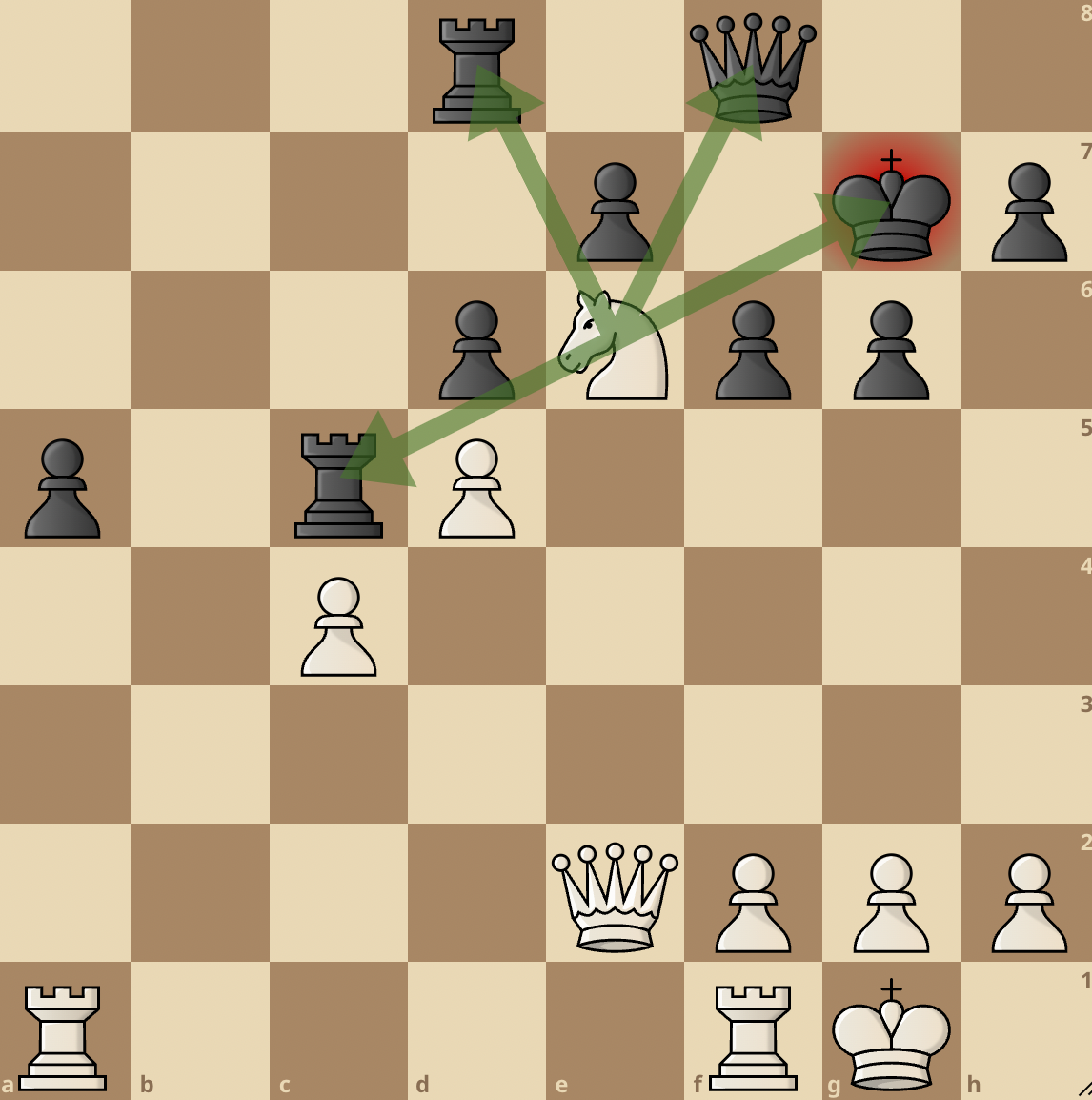
From the position above, we see a powerful knight wreaking havoc on Black’s camp with the Ne6+ move forking all pieces. IM Jeremy Silman would have called this particular knight ‘a fearsome Octopus’.
This is also known as a royal fork because the king and queen are simultaneously threatened after which the queen is then captured.
Knight are also excellent pieces when it comes to smothered mates.
A smothered mate happens when a king is completely surrounded by its own pieces, that it doesn’t have any flight squares to run to when a check is delivered.
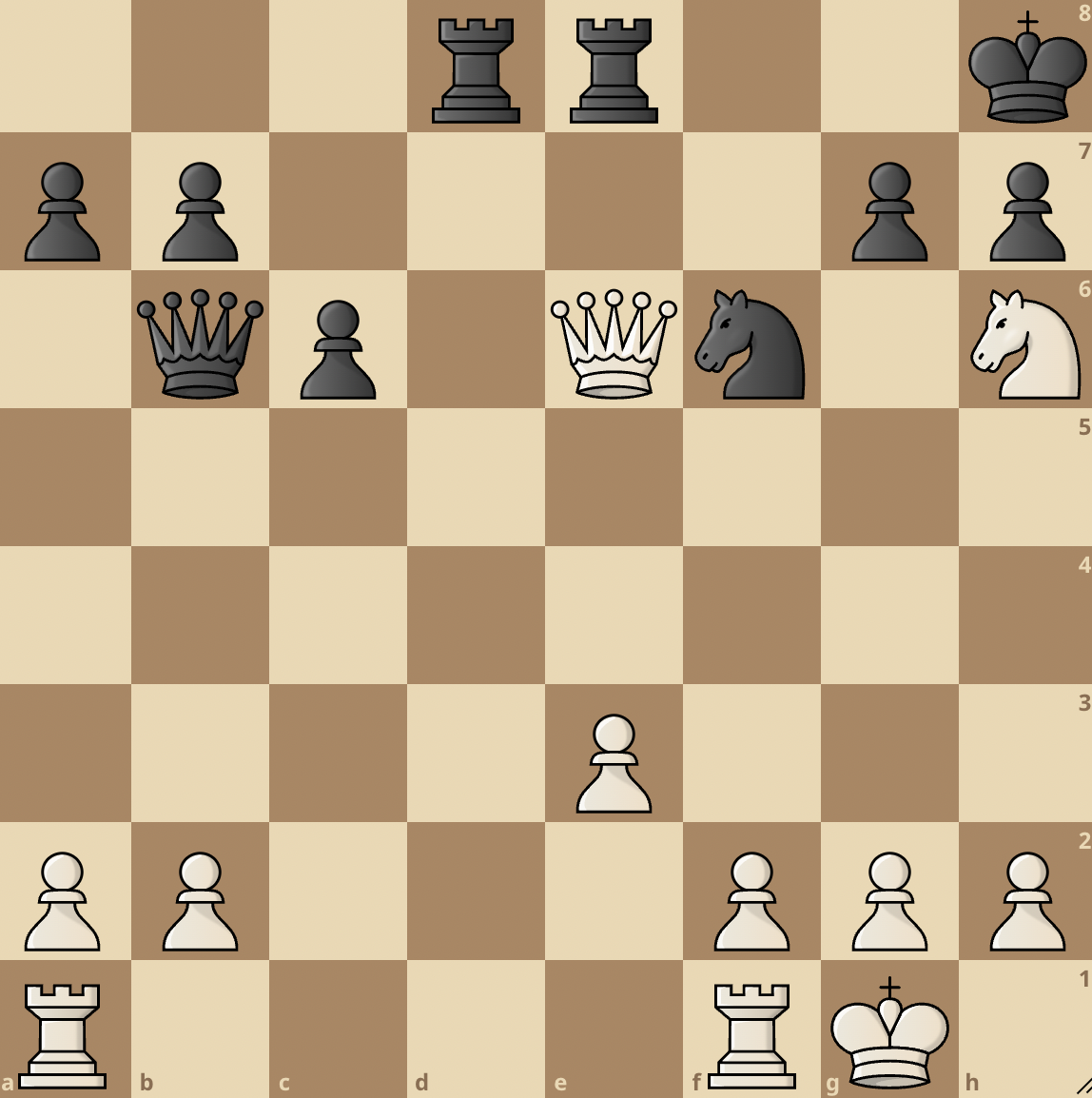
In this position, Black just played Re8 threatening the White queen on e6. However, there’s a major flaw in this move.
White can deliver a smothered mate with the help of the knight on h6.
White starts with 1. Qg8+!
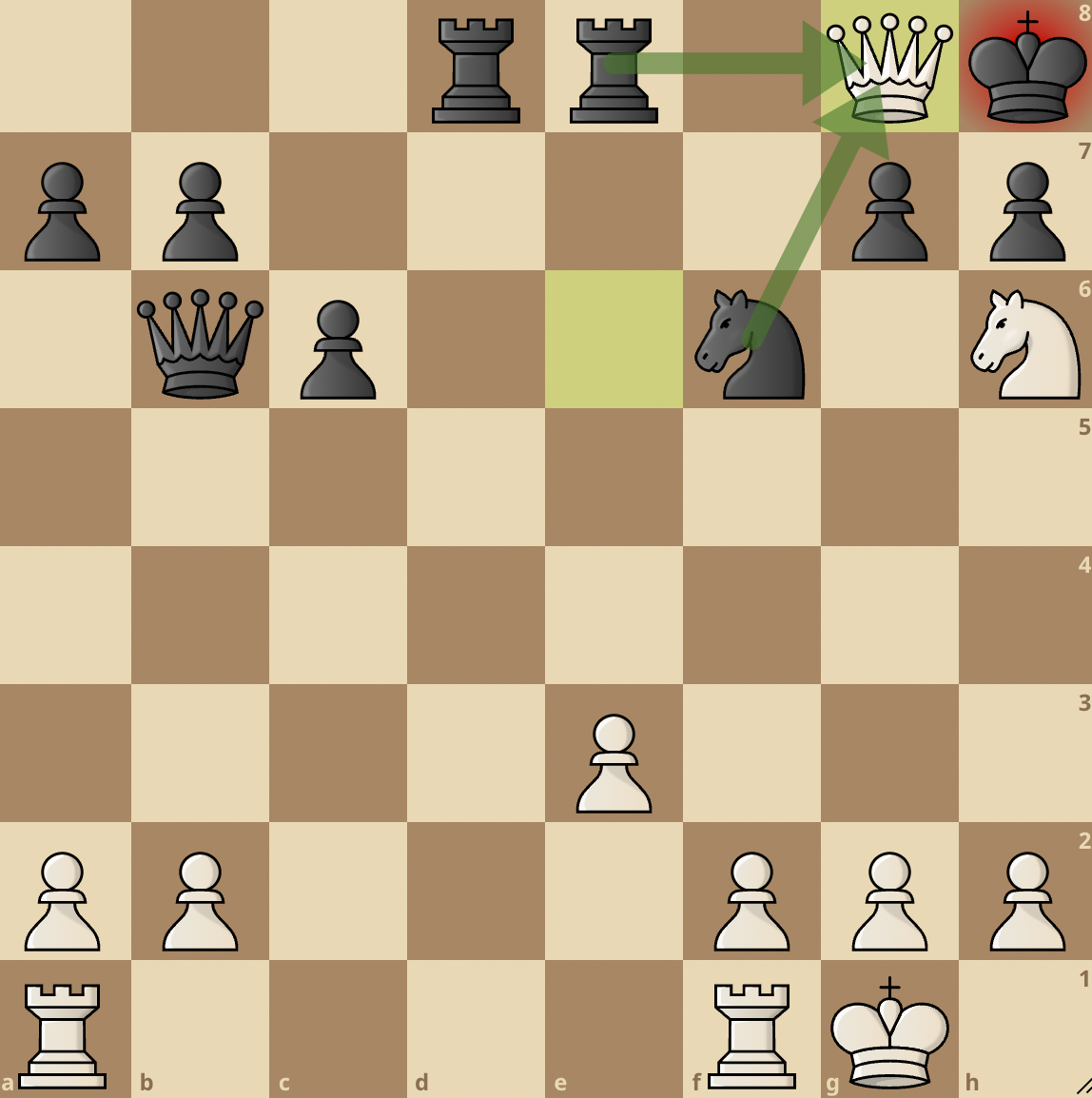
The idea is very simple. White wants to hem in the king by ensuring the g8 square is taken by one of its pieces. Notice that the Black king can’t capture the queen because of the support from the knight on h6.
1… Nxg8 (Black can also play Rxg8 but they all lose)
2. Nf7#
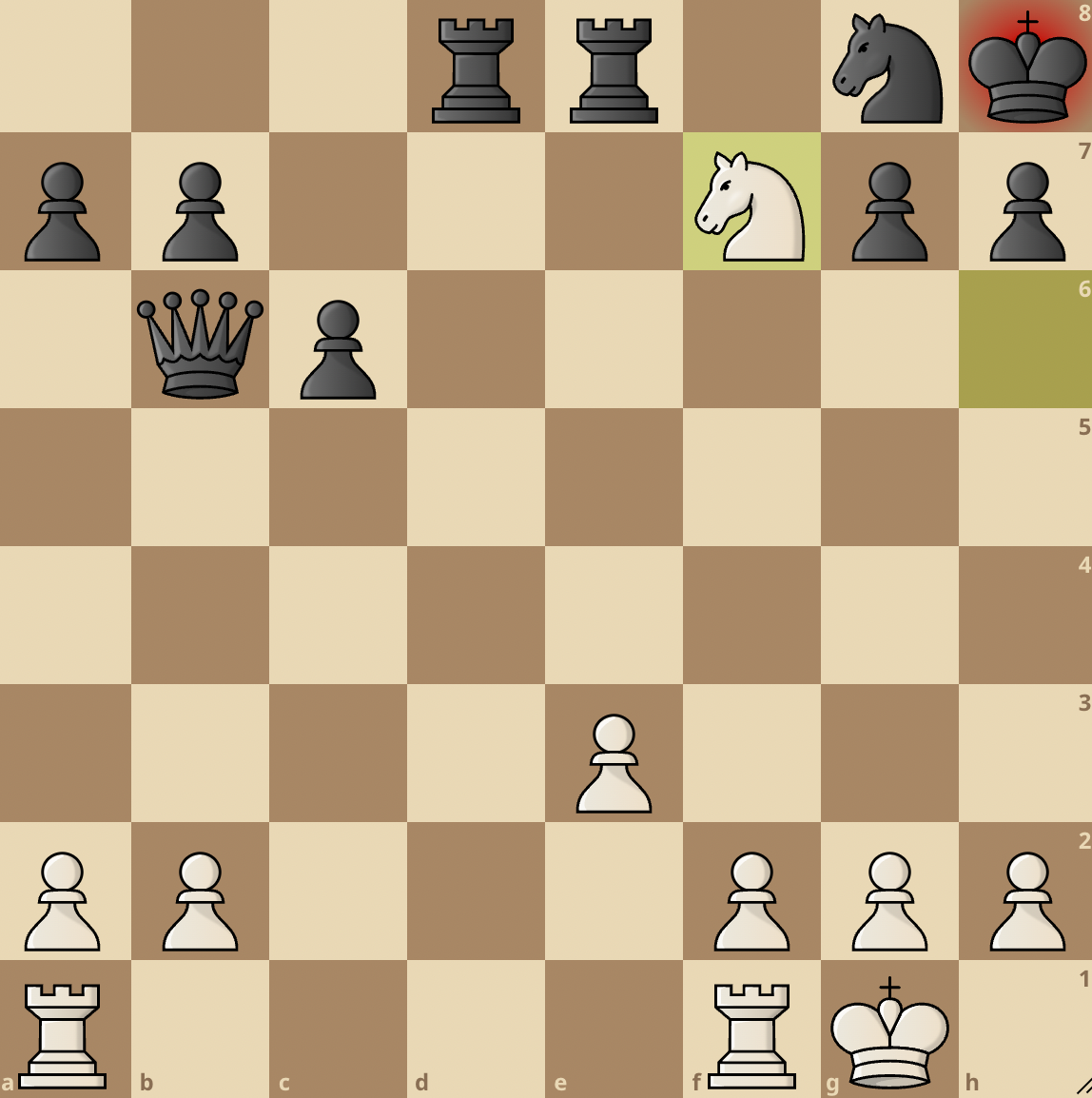
The king is hemmed in and can’t escape the check or capture the knight. It’s game over.
Best Tips on How To Use the Knight
Place your knight at the centre of the board
There’s a popular chess saying that goes: “A knight on the rim is dim”.
Unlike bishops and rooks, which can advance to the other side of the board in a single move, knights have a limited range of possible moves and can only move three spaces at a time.
Placing your knights at the edge of the board reduces the number of squares it has access to. On the other hand, playing in the centre allows you to maximize your knights’ potential.
Seek out outposts
The middle of the board is where knights are most effective, but it is also where they are most vulnerable to attack from your opponent’s pieces.
To avoid this, look for spots around the center of the board that your opponent’s pawns can’t easily attack. These spots are called outposts and are powerful centre squares that are not threatened by opposing pawns.
Holes in your opponent’s pawn structure make excellent knight outposts. Remember the fork example above? That White knight on e6 is sitting pretty on a powerful outpost.
Develop your knights early
Early development of your knight helps you gain control of the centre of the board. Knight moves are typically made before queen or rook moves.
A quickly developed knight also allows you to castle early in the game, as chess rules require the knight and bishop to be developed before castling long or short.
Be cautious of traps
Because knights have a limited number of manoeuvres, they are vulnerable to traps.
During an endgame, a knight on a light square at the edge of the board can be vulnerable to a dark-squared bishop.

For example, the White knight on a8 is trapped by the dark-squared bishop that controls the b6 and c7 squares where the knight can jump to.
All Black has to do is move the king to d6, force an exchange of light-squared bishops (aka taking out the defender) and go ahead to capture the knight. It’s winning for Black.
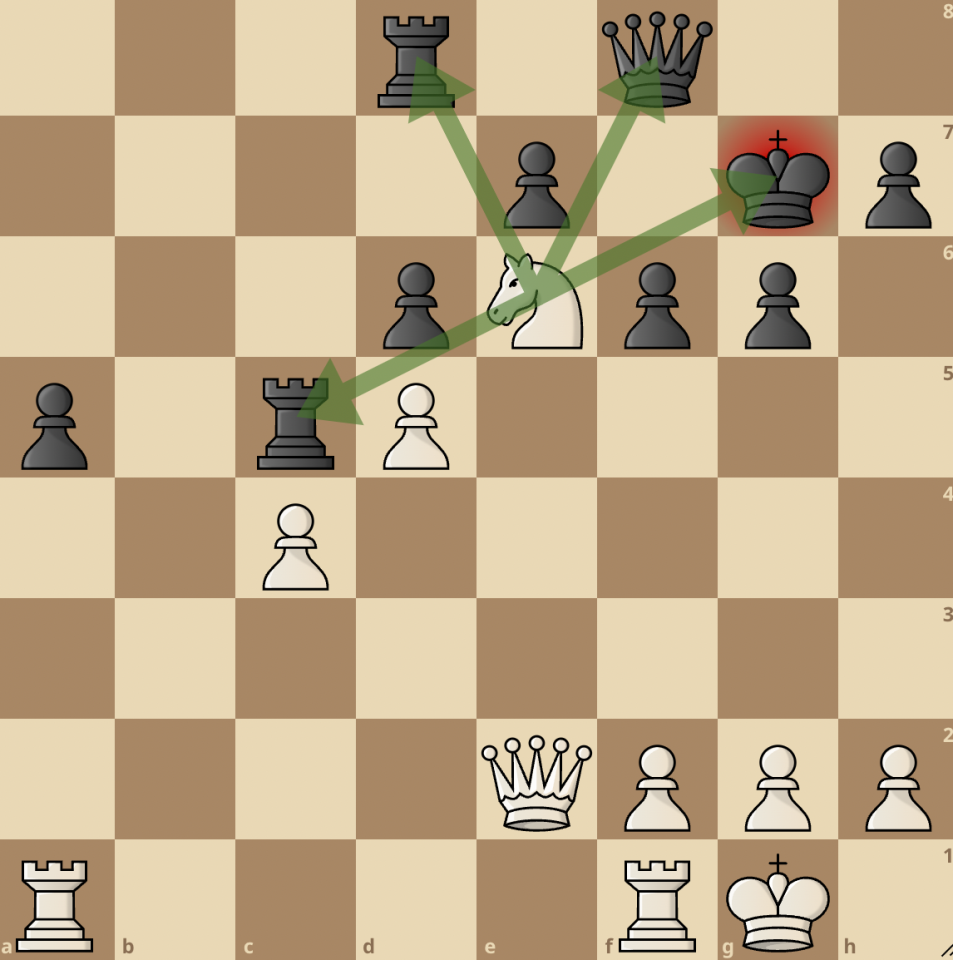



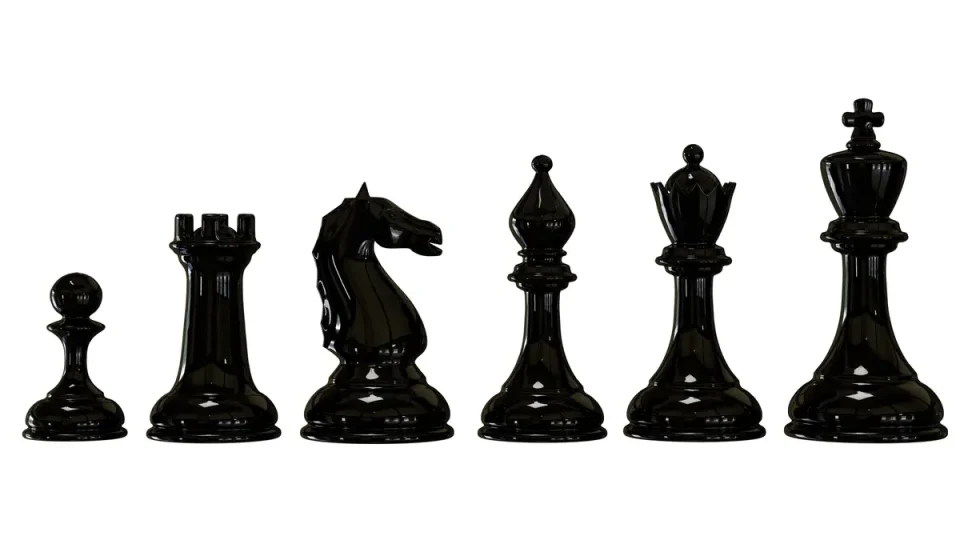
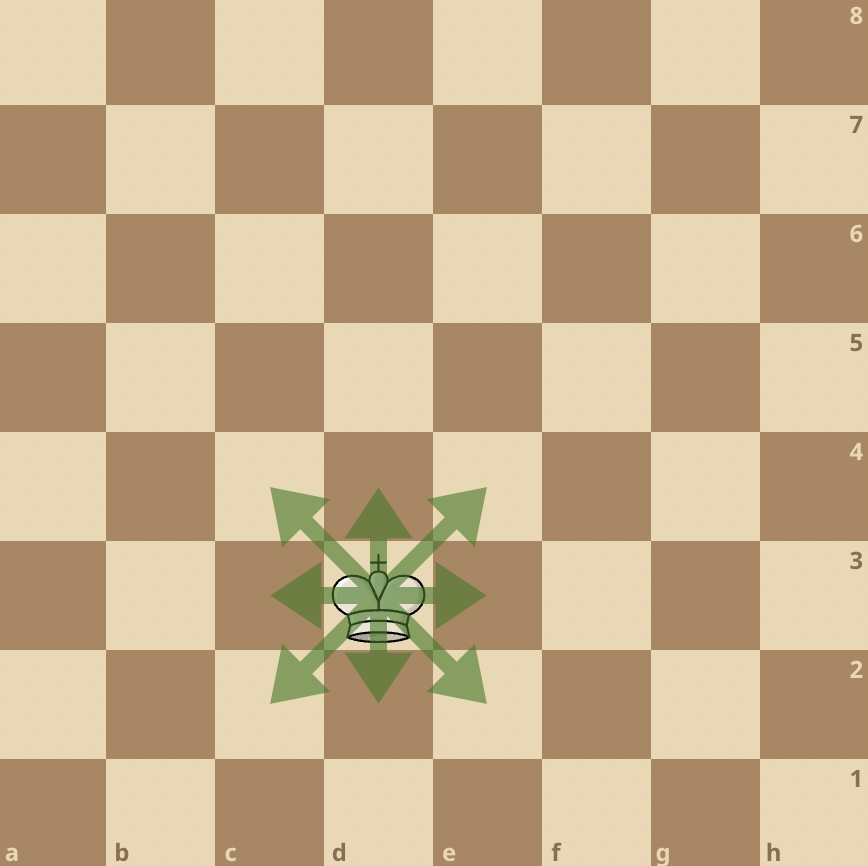
join the conversation